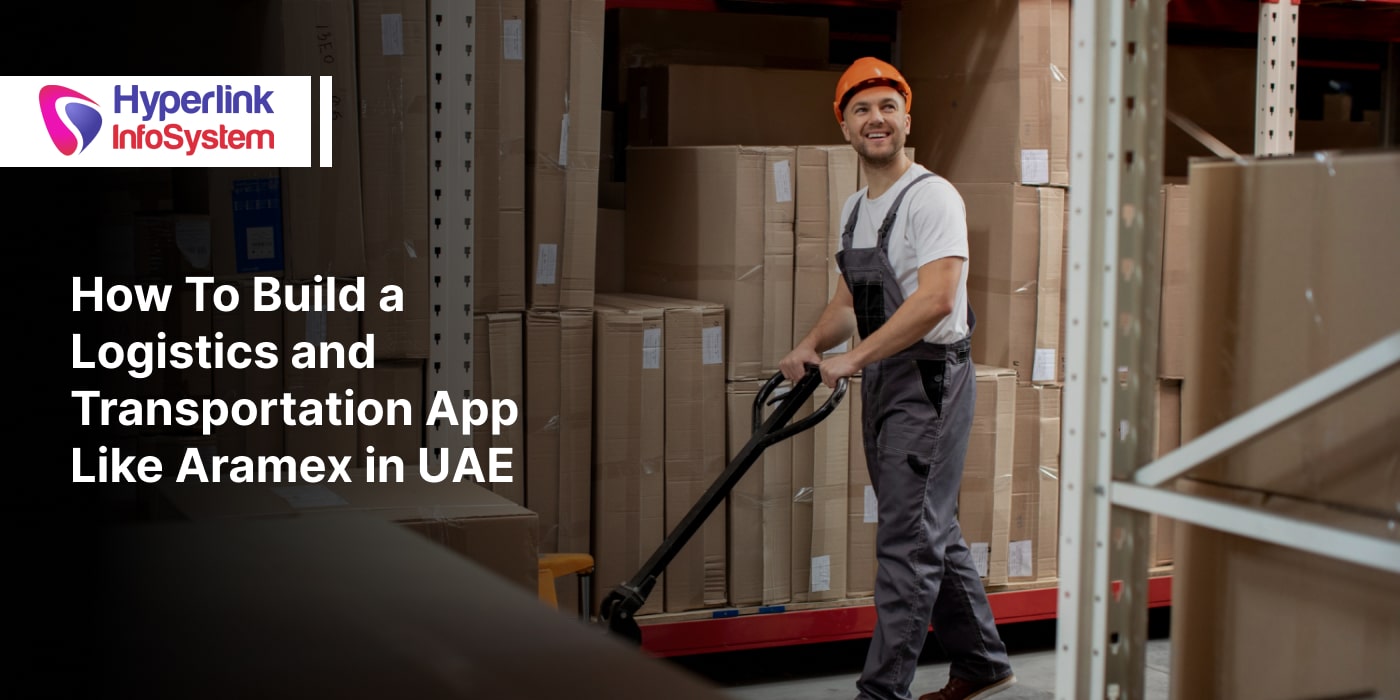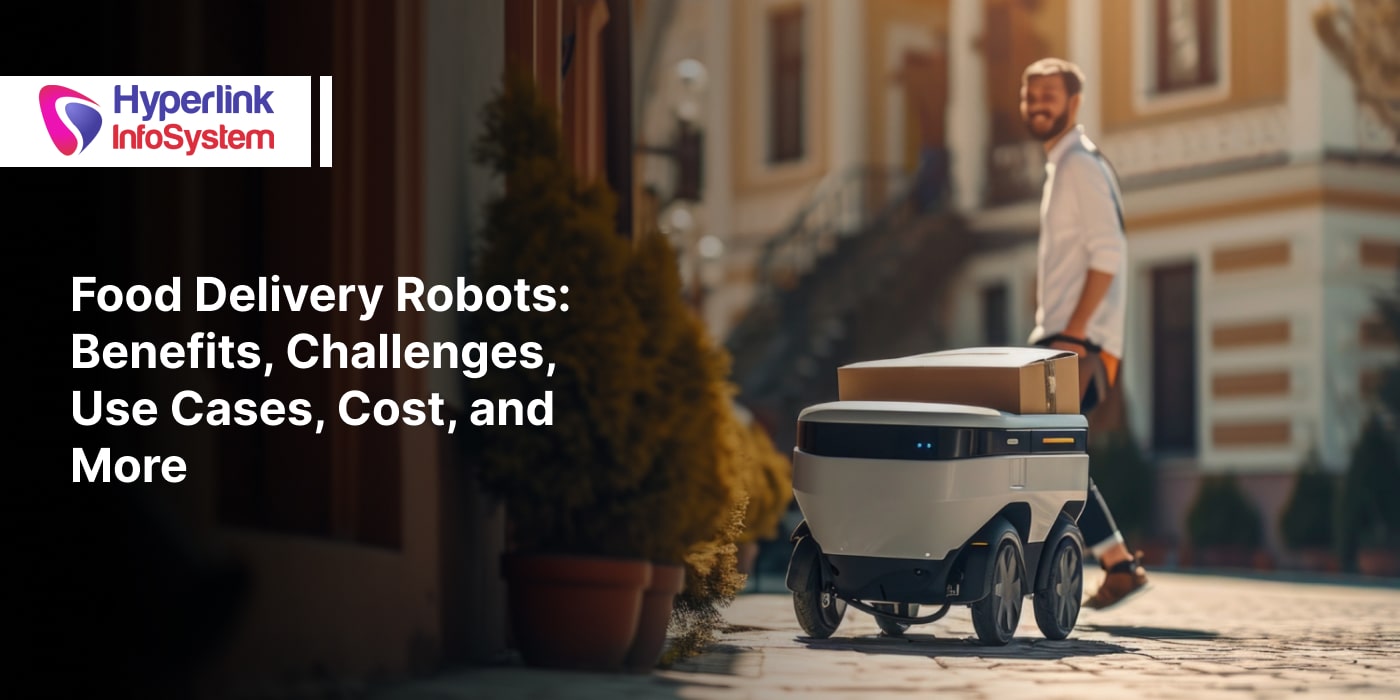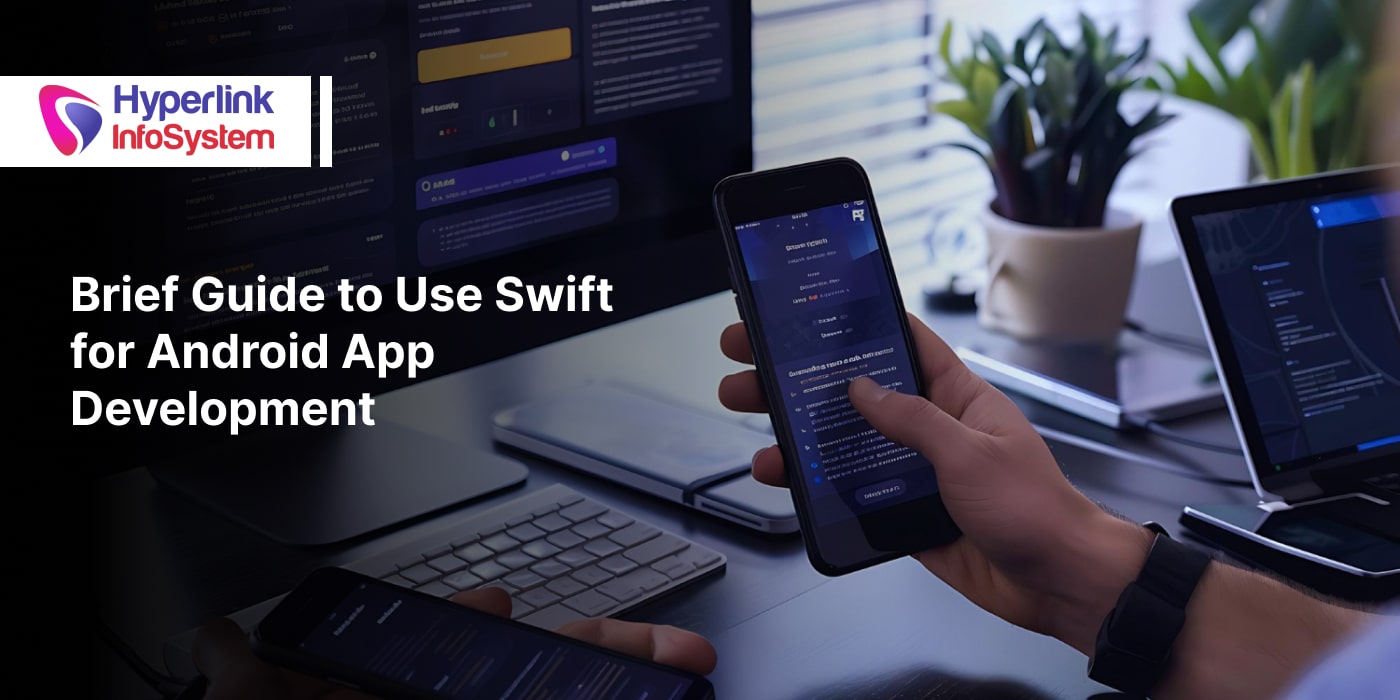Cost to Develop a Food Delivery App Like Doordash
Jun 2025
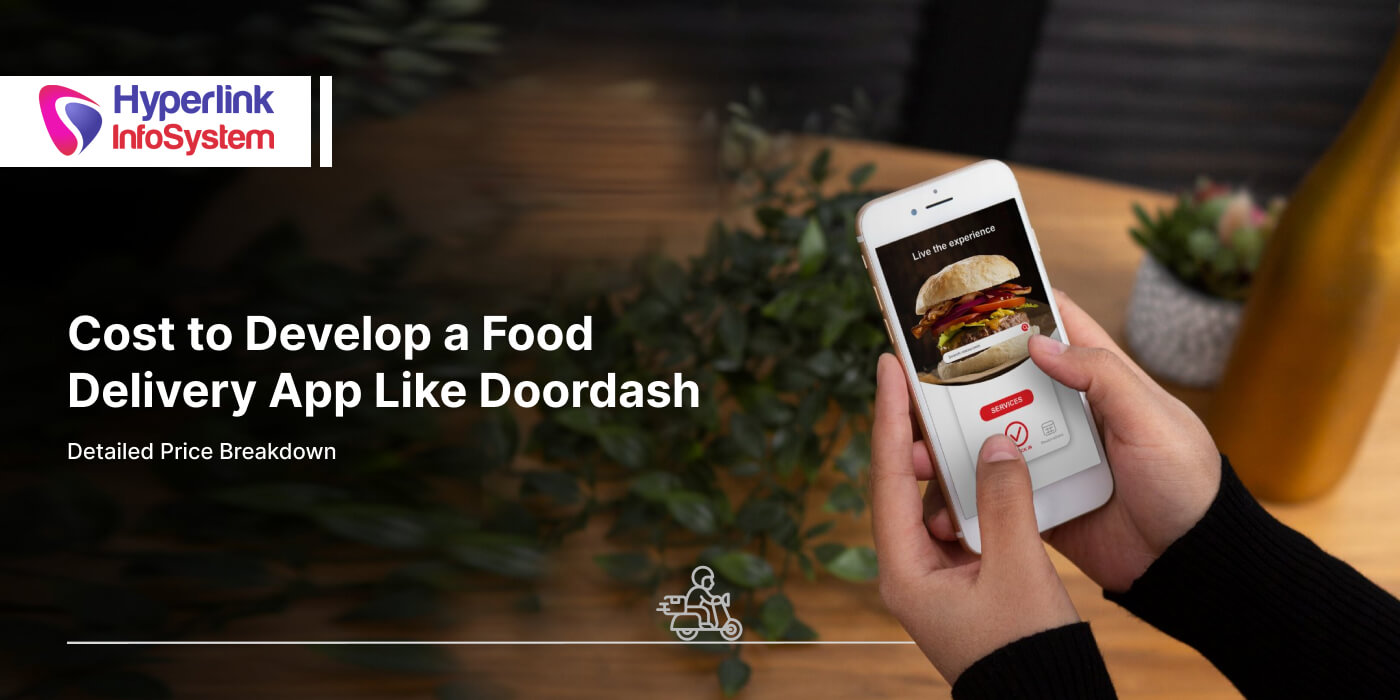
Are you looking to develop a food delivery app like DoorDash for your business? Awesome! No matter if you own a cafe, food truck, restaurant, or cloud kitchen, a food delivery app is key to expanding your reach, enhancing customer satisfaction, and streamlining your operations.
The revenue of the food delivery app market is projected to hit $1.39 trillion in 2025 and $2.02 trillion by 2030. These statistics reveal a lot about how popular food apps have become and why they matter so much for businesses. With innumerable food delivery apps like DoorDash operating around the globe, it's crucial for businesses to stand out from the competition.
Building a delivery app like DoorDash is merely copying its pattern. However, even emulating their style requires significant spending and strategy development. In this blog, we are going to explore the ins and outs of building a delivery app like DoorDash. We will discuss the costs involved, must-have features, challenges companies might encounter, and much more. Without wasting more time, let’s get started.
What Is DoorDash?
DoorDash is an American service that partners with various food businesses to ensure that meals arrive promptly at customers’ doorsteps. Launched in 2012, the delivery app has grown by leaps and bounds, operating in 300 locations throughout the U.S. and raising $2.5 billion in funding to date. They take pride in delivering food to customers within 30 minutes of an order being placed.
Why Do Companies Want to Develop a Food Delivery App Like DoorDash?
Creating an app like DoorDash goes beyond delivering meals. It's about harnessing a wealth of data, building connections with customers, and creating an ecosystem that opens up new streams of revenue. DoorDash must have done something that has helped it achieve incredible success in such a short time. So what separates DoorDash from the thousands of other delivery apps on the market? The following are the reasons.
Targeted Suburban Areas
Bigger players focused on large cities and densely populated areas. But DoorDash focused on suburbs and smaller towns where there was little competition, resulting in faster growth.
Recognized Logistics Issues
Food delivery is more than just a bridge between two parties. It involves navigating various logistical roadblocks. To improve delivery times, DoorDash has embraced various cutting-edge technologies, including route optimization, real-time tracking, and predictive analytics.
Restaurant-Centred Concept
Partnered with restaurants, offering valuable tools for order management and analytics. It also provided delivery infrastructure, earning the trust of big and small businesses alike.
Flexible Work Hours
Signing up and working for DoorDash is a walk in the park, especially for drivers. This flexibility has helped expand its driver network.
Vertical Expansion
Sticking to food delivery is not a long-term strategy, and DoorDash knew it right from the beginning. It expanded to convenience stores, grocery, and alcohol delivery while starting its unique convenience store chain called DashMart.
Leveraged ML and Personalization
By harnessing the power of machine learning, DoorDash gathered and analyzed customer data, leading to smarter decision-making. This effort resulted in personalized menus, faster delivery times, and an enhanced user experience.
Powerful Branding
DoorDash has launched a fantastic membership program known as DashPass, offering free delivery on eligible orders. On top of that, customers can take advantage of additional benefits such as discounts reserved for members.
Strategic Partnerships
Other steps that DoorDash undertook to gain more customers and cement its market position include the following-
- Teamed up with major food chains such as McDonald’s and Wendy’s.
- Acquired Caviar to access premium markets.
- Acquired Wolt to boost global reach.
Companies want to develop an app like DoorDash because of the unbelievable results it achieved, and that too by making simple changes. DoorDash led by example and taught others the importance of playing the long game, scaling smart, empowering partners, and adapting constantly to stay relevant. Companies should understand that leveraging the right technology and strategy can open the door to sustainable success.
Also Read: Cost To Develop A Food Delivery App Like Glovo
Top 9 Features of a Food Delivery App Like DoorDash
Below are the top 9 features of the DoorDash food delivery app.
- Extensive Restaurant Selection - Provides access to thousands of local and nationwide restaurant options.
- Real-Time Order Tracking - Delivery tracking on a live map.
- Scheduled Deliveries - Schedule order deliveries in advance.
- DashPass - Subscriptions and free deliveries, plus special discounts for members.
- Contactless Delivery - Leave-at-door option for safe drop-offs.
- Group Orders - Share a cart with friends/family to order together.
- In-App Promotions and Discounts - Get exclusive deals and offers.
- Grocery and Convenience Delivery - Think beyond meals, order essentials.
- Multiple Payment Options - Provides the flexibility of several payment options such as debit/credit cards, Apple Pay, Google Pay, and gift cards.
Stage-Wise Cost Breakdown to Develop a Food Delivery App Like DoorDash
The cost of developing a delivery app like DoorDash can fall anywhere between $250,000 to $850,000, covering all aspects from planning to maintenance. Additionally, expect to spend around ongoing $5000 to $25,000 each month for ongoing maintenance.
Creating an app like DoorDash is not a simple task, it involves plenty of planning and coordination. Before diving into app development, the app development partner and the company must discuss the approach and strategies to ensure the project’s success. After UX design, they can move to app development, followed by testing, deployment, launch, and maintenance. Below is a stage-wise cost breakdown for developing a complex app like DoorDash.
Note that the figures mentioned below are just to give companies an approximate idea. The costs can fluctuate depending on the app’s features, the development team’s location, tech stack, and other factors.
|
Stage |
Description |
Estimated Cost (USD) |
|
Ideation and Planning |
Research, strategy, technical specs, and MVP |
$15,000 - $50,000 |
|
UI/UX Design |
Wireframes, screen designs, user flows, and prototyping |
$20,000 - $80,000 |
|
App Development |
iOS, Android, backend, APIs, and admin dashboard |
$120,000 - $450,000 |
|
Testing and QA |
Manual and automated testing, performance, and compliance |
$15,000 - $50,000 |
|
Deployment and Launch |
Cloud setup, app store submissions, and marketing assets |
$5,000 - $20,000 |
|
Maintenance |
Bug fixes, server ops, updates, and scalability |
$60,000 to $300,000/year |
|
Optional Features |
AI, analytics, chatbots, and localization |
$5,000 - $100,000 |
8 Factors to Consider While Building a Food Delivery App Like DoorDash
Before kicking off app development, it is important to take a moment to consider the factors that could impact your costs. By understanding these costs, companies can better plan their budgets effectively and manage their spending. This way, they can ensure that they have sufficient funds for app maintenance, monetization, and other tasks. Below are some key points to consider before jumping into food delivery app development.
1) Team Size
It is quite simple. The bigger the app development team, the higher the costs. Professionals with in-demand skills will also demand higher remuneration compared to others. Below is a detailed explanation of the team size required to develop an app like DoorDash and their remuneration.
Mobile App Developers (2 to 3)
- A mobile app development team will typically have two to three members.
- Main tasks involve building native or cross-platform applications, API integration, and maintaining UI logic.
- Remuneration ranges from $40,000 to $150,000.
Backend Developers (1-2)
- Team size of one to two members.
- Key responsibilities include designing databases, APIs, server logic, user authentication, order management, and more.
- Remuneration can fall between $30,000 to $100,000.
DevOps / Cloud Engineer (1)
- Only a single DevOps/Cloud engineer would be required for this project.
- Responsibilities include key tasks such as deployment and maintenance of server infrastructure (AWS, GCP), CI/CD pipelines, and constant monitoring.
- Remuneration ranges from $10,000 to $30,000.
Frontend Web Developer (1)
- This project requires only one front-end web developer.
- Core tasks involve creating and overseeing the restaurant and admin portal. The developer should have a solid grasp of React, Angular, Vue, and the technologies required for the project.
- Compensation ranges from $10,000 to $30,000.
QA Engineer (1)
- For such projects, only one QA engineer is required
- Key tasks include manual and automated testing, performance optimization, and reporting any bugs that come up.
- Remuneration can vary between $10,000 to $25,000.
Project Manager (1)
- Only a single project manager is enough for this project.
- Key responsibilities include ensuring proper team coordination, managing timelines and deliverables while maintaining agile workflows.
- Remuneration can be anywhere from $10,000 to $25,000.
Tech Lead Architect (1)
- A single tech lead architect is sufficient for this project.
- Key responsibilities include defining app infrastructure, technology stack, security protocols, and scalability strategy.
- Remuneration can range from $5,000 to $20,000.
API Integration Specialist (Optional)
- Hiring an API integration specialist is optional. If the development team is well-versed in integration, there is no need to hire a specialist. For complex projects, it is a good idea to bring onboard an API integration specialist.
- Key responsibilities of the API integration specialist include handling third-party service integrations, maps, payments, text messages, and more.
- Remuneration for this role can fall anywhere between $5,000 to $20,000.
Note that app development costs for professionals mentioned above are just to give companies an approximate idea. Actual figures may change, depending on the project, location, and other factors. Are you thinking of developing a delivery app for your business? Consider hiring on-demand app developers for your project.
2) Development Team Location
When it comes to developing an app like DoorDash, the location of the team plays a pivotal role. It is widely recognized that hiring app developers in India is more budget-friendly than hiring developers from America or Europe. However, working with overseas development teams comes with its unique set of challenges, such as time zone differences and potential communication gaps. Regulatory compliance requirements are also a major factor.
Below are the approximate rates to hire app developers in India, Europe, and other locations.
Hire App Developers in India
- Hiring app developers in India and Southeast Asia can be a smart move for companies looking to source affordable services while tapping into a pool of huge talent.
- Rates can be anywhere between $15 to $50 per hour.
Hire App Developers in North America
- Hiring app developers in North America is usually expensive. Clients can rest easy knowing they will receive top-quality services and optimal experiences.
- Rates range between $100 and $200 per hour.
Hire App Developers in Western Europe
- When you choose to hire app developers in Western Europe, you are guaranteed high-quality services that comply with all the necessary regulations.
- Rates range from $75 to $150 per hour.
Hire App Developers in Eastern Europe
- Hiring app developers in Eastern Europe tends to be more budget-friendly than in many other parts of Europe. Also, it is easy to find a large pool of talented developers.
- Rates range from $30 to $70 per hour.
Hire App Developers in Latin America
- Hiring app developers from Latin America can be highly beneficial for clients, especially ones from America, because of the time zone differences. Not to mention competitive pricing.
- Rates range from $30 to $50 per hour.
Finding the right team for your delivery app project can be somewhat tricky. The average app development company may not be the right fit for your business needs. Consider partnering with a food delivery app development company to achieve the best results.
3) App Complexity
While calculating the app development cost, one key factor to keep in mind is the complexity of the app. Complex apps have advanced features that can cost more than simple apps. For instance, a basic food delivery app with core features can cost as little as $5,000, and the costs for super complex ones can easily surpass $300,000. Such complex food delivery apps can include features like AI suggestions, loyalty programs, and multi-language support.
|
App Complexity |
Cost (USD) |
Timeline |
Key Features |
|
Basic MVP |
$5000 - $25,000 |
1 to 3 months |
Login, menu browse, order payment, and tracking |
|
Standard |
$25,000 - $80,000 |
3 to 6 months |
MVP, UI/UX upgrade, tracking, reviews, and loyalty |
|
Complex (Like DoorDash) |
$100,000 - $300,000 |
6 to 12 months |
Full custom app, AI suggestions, multi-role, chat, and promotions |
4) App Features
To build an app like Uber Eats or DoorDash, companies need to include advanced features. Basic food delivery apps will not deliver the same user experience as complex apps with advanced features.
Companies can consider starting with an MVP product and adding more features as their business expands. Alternatively, when a company wants to begin by creating an advanced app like DoorDash, they might want to consider including features such as chat support, analytics, reporting, and real-time order tracking.
Such costs can hike the overall app development costs by 120 to 180 percent. Below are the approximate costs of some features in an app like DoorDash. Note that these numbers are just to give companies a rough idea.
|
Feature |
Description |
Estimated Costs (USD) |
|
User Registration and Login |
Email/social login, OTP, profile management |
$15,000 - $20,000 |
|
Restaurant Listings |
Browsing restaurants, menus, searches, and filters |
$25,000 - $30,000 |
|
Order Placement |
Cart, order customization, and checkouts |
$30,000 - $35,000 |
|
Real-Time Order Tracking |
GPS tracking for drivers and delivery statuses |
$25,000 - $30,000 |
|
Payment Integrations |
Multi-payment gateways, wallets, and promo codes |
$20,000 - $25,000 |
|
Push Notifications |
Order updates and promotions |
$8,000 - $12,000 |
|
Ratings and Reviews |
Customer feedback on restaurants and delivery |
$8,000 - $10,000 |
|
Delivery Partner App |
Driver registration and delivery management |
$30,000 - $35,000 |
|
Admin Dashboard |
Manage users, restaurants, orders, and payments |
$35,000 - $45,000 |
|
Offers and Discounts Module |
Manage promos and codes |
$10,000 - $15,000 |
|
Customer Support Chat |
In-app chat, FAQs, and ticketing |
$12,000 - $18,000 |
|
Analytics and Reporting |
Order insights, users, and revenues |
$15,000 - $20,000 |
|
Multi-Language and Multi-Currency Support |
Localization and global support |
$10,000 - $15,000 |
|
Security and Compliance |
Data encryption, GDPR, PCI DSS, and other regulations |
$12,000 - $18,000 |
The costs mentioned above are as per North American or European standards. Suppose a company entrusts the same responsibility to an app development company in Asia or Latin America, the costs would plummet by 40% to 60%.
The approximate cost to develop the above features in such a scenario (development in Asia or Latin America) would be between $140,000 and $180,000. Confused about which features to include in your food delivery app? Speak to a mobile app development service provider with a proven track record in the food delivery app sector.
5) App Platform
Deciding on a platform, whether it is iOS, Android, or cross-platform, can greatly affect the development costs. Variations in costs exist due to tech stack differences, development efforts, team sizes, and resource allocation. Also, the testing and UI/UX requirements for each platform differ. Designers, testers, and developers have to work hard to complete the project. Below is an approximate cost breakdown for food delivery apps, considering the differences in platforms.
iOS Food Delivery Apps
- Basic MVP - $70,000 - $120,000
- Full-Featured Version - $180,000 - $300,000+
Android App (Kotlin/Java)
- Basic MVP - $70,000 - $120,000
- Full-Featured Version - $180,000 - $300,000+
Cross-Platform App (Flutter or React Native)
- Basic MVP - $100,000 - $160,000
- Full-Featured Version - $250,000 - $400,000
Note that these platform-specific app development costs are just to give companies a rough idea. Consult a professional app development company for an accurate quote.
6) Technology Stack
The technology stack chosen to build a delivery app like DoorDash depends on several factors. These factors include the following-
- Client Requirements (platform, scalability, and performance)
- Budget and Project Timeline
- Team Expertise and Preferences
- Long-Term Maintenance Goals
- Integration Requirements (CRM, payment gateways, and others)
Suppose a company wants to create an app like DoorDash in 6 to 12 months. It would need at least 10-12 experienced professionals for this project since it involves building a complex DoorDash-like app. In such cases, the technology stack and related expenses would be as follows-
|
Stack |
Technologies Used |
Estimated Cost (USD) |
|
Mobile Frontend |
Flutter/React Native |
$50,000 - $100,000 |
|
Web Frontend (Admin/Dash) |
Next.js (React), Tailwind CSS |
$20,000 - $40,000 |
|
Backend APIs |
Node.js, Express/NestJS, or FastAPI |
$40,000 - $80,000 |
|
Database Layer |
PostgreSQL + Redis |
$10,000 - $20,000 |
|
Real-time Features |
WebSockets/Firebase/MQTT |
$10,000 - $25,000 |
|
Cloud Infrastructure |
AWS/GCP, Docker, and Kubernetes |
$20,000 - $40,000 |
|
DevOps + CI/CD |
GitHub Actions, Terraform, Helm, and more |
$10,000 - $20,000 |
|
Maps and Geo Tracking |
Google Maps API/Mapbox + Firebase |
$5,000 - $15,000 |
|
Authentication and Security |
Firebase Auth / Auth0 / OAuth2 |
$5,000 - $10,000 |
|
Payments Integration |
Stripe / PayPal / Razorpay |
$5,000 - $10,000 |
|
Push Notifications |
Firebase Cloud Messaging / One Signal |
$3,000 - $7,000 |
|
Analytics and Monitoring |
MixPanel / GA4 / OpenTelemetry |
$3,000 - $8,000 |
|
Third-Party Integrations |
SMS and email |
$2,000 - $5,000 |
Note that the figures mentioned above are just to give companies an approximate idea about technology stack-related costs. Outsourcing the project to countries in Latin America or India will reduce the costs by 40 to 60 percent.
7) Maintenance and Update Costs
Companies can't afford to sit back and relax after launching an app like DoorDash. The road is far ahead, and there is work to be done. Post app launch, companies will have to prepare themselves for maintenance and update costs.
With it comes to a complex app like DoorDash or Uber Eats, keeping things running smoothly means you need constant updates and fine-tuning. This is crucial for ensuring optimal performance, security, customer satisfaction, and long-term business growth.
Below is an approximate estimate of the maintenance and update costs after launching a delivery app like DoorDash.
|
Cost |
Frequency |
Estimated Annual Cost (USD) |
|
Backend Server Maintenance |
Monthly |
$12,000 - $25,000 |
|
App Store Updates (iOS/Android) |
Quarterly+ |
$6,000 - $15,000 |
|
Bug Fixes and Minor Improvements |
Ongoing |
$10,000 - $30,000 |
|
Infrastructure (cloud, CDN, DB) |
Monthly |
$18,000 - $60,000 |
|
Security Audits and Updates |
Every 6 Months |
$5,000 - $20,000 |
|
Feature Upgrades and UX Refreshes |
Quarterly+ |
$15,000 - $50,000 |
Companies must not ignore maintenance costs because that may compromise the overall performance. Poor app maintenance can result in crashes, poor reviews, data breaches, and customer churn. Ensuring timely maintenance and updates helps retain customers and deliver top-notch efficiency.
Most importantly, scaling and expansion are not possible without regular updates. Implementing regular updates helps support a massive user base and facilitates business expansion.
8) Marketing and Promotions
DoorDash’s sales and marketing expenses in the first quarter of 2025 were around $586 million. Any company that wants to tread in DoorDash’s footsteps will have to be prepared to spend such colossal amounts on marketing and promotions.
Below is a breakdown of marketing and promotion-related costs for a delivery app like DoorDash.
|
Marketing Activity |
Estimated Monthly Cost |
|
In-App Promotions |
$5,000 - $20,000 |
|
Paid Advertising |
$10,000 - $50,000 |
|
Influencer and Affiliate Marketing |
$5,000 - $15,000 |
|
Referral Program Incentives |
$5,000 - $20,000 |
|
Email and Push Notification Tools |
$500 - $2000 |
|
Local Events and Partnerships |
$2,000 - $10,000 |
|
Total Estimated Budget |
$27,500 - $117,500 |
It is easy to get carried away and overspend on marketing and promotions. Companies must play it safe in the beginning. The strategies below might help.
Start with targeted promotions, preferably in-app promotions that are easy on the pocket. It helps attract initial users.
Monitor campaign performance regularly to optimize return on investment.
Pick the channels that deliver the best results. Increase marketing spending slowly.
Keep an eye on the latest industry and competitor strategies. Adapt and innovate to refine marketing plans.
Don’t let these costs dampen your spirits. It is advisable to consult a specialist, such as a food delivery app development company, to help you navigate these tricky waters.
Also Read: Cost to Build an On-demand Food Delivery App like Deliveroo
6 Challenges Faced While Developing a Food Delivery App Like DoorDash
Businesses face countless challenges while developing a food delivery app like DoorDash.
1) Real-Time Order Tracking
- Challenges - GPS drift, driver detours, and urban signal interference can hamper real-time tracking.
- Solution - Using sensor fusion and predictive ETA algorithms trained on traffic, weather, and delivery history can help overcome these issues.
2) Dynamic Dispatching and Route Optimization
- Challenge - Picking the best available driver for a particular order to reduce travel time and ensure speedy deliveries to customers.
- Solution - Leverage machine learning to determine which driver should pick up an order based on distance, speed, driver availability, and other factors.
3) Inventory Sync Between Restaurants & App
- Challenge - Wrong products, missing items, and out-of-stock products can create an unsatisfactory customer experience.
- Solution - Effective integration with POS systems or simple restaurant tools (like tablets) to ensure real-time inventory sync, ensuring companies don’t face inconvenience.
4) Fraud and Fake Orders
- Challenge - Many users exploit promo codes, abuse refund policies, or create fake accounts using bots. Such malpractices can drain revenue, skew analytics, and tarnish the platform’s reputation.
- Solution - Implement behavioral analytics, device fingerprinting, and machine learning-based fraud detection systems.
5) Pricing Fairness
- Challenge - Prices may surge sharply during peak hours, which can discourage customers. This may result in negative reviews and people leaving the app.
- Solution - Implement limits on how high prices can soar during peak times and state the reasons for price hike.
6) Driver Retention and Churn
- Challenge - Many drivers quit their jobs due to low pay, unbalanced workload, or poor support from the management.
- Solution - Implement performance-based bonuses for drivers. Reward driver loyalty by considering factors like experience, ratings, and efficiency. Rotate drivers regularly and enable real-time driver support.
Don’t let obstacles get in the way of building a delivery app like DoorDash. Partnering with a reputed mobile application development company can help companies overcome such hurdles and come out on top.
8 Best Tips to Develop a Food Delivery App Better than DoorDash
DoorDash is an outstanding delivery app that has raised the bar for other companies. Still, there is always room for improvement. Below are some golden tips to develop an app better than DoorDash.
- AR Menus - Visualize dishes in your space before ordering.
- Voice Ordering - Provide a hands-free ordering option via voice commands.
- Personalized Subscriptions - Offer personalized plans with unique perks, discounts, and offers.
- Proactive AI Support - Leverage AI to anticipate and resolve customer issues.
- Driver Skill Matching - Use AI to optimize order assignments for drivers.
- Community Features - Interact, share reviews, and split group orders.
- Sustainable Options - Provide eco-friendly and ethical delivery options
- Localized Theme Experiences - Bespoke menus, language, and promotions to target cities and neighborhoods.
The secret lies in learning from companies like Uber Eats and DoorDash while lending a unique touch to the app. Competitor research, detailed market analysis, and understanding customer expectations can help companies develop a delivery app like DoorDash or better than it.
Final Thoughts
Creating an app like DoorDash is not rocket science, but it's no mean feat either. However, with the right technology stack, understanding of the market, customer expectations, and a calculated strategy, a company can write its success story. All of this may sound a little overwhelming, but there is no need to stress and do everything yourself.
Hyperlink InfoSystem is a seasoned mobile application development company who can be your mentor in the quest to develop the ultimate food delivery app. With 12+ years of industry experience, 3000+ completed projects, and fleet of experienced technical professionals, we have what it takes to accomplish projects from start to finish. Speak to one of our representatives to see what we can do for you.
Schedule a Consultation Today!
Frequently Asked Questions
Below are the steps to develop a delivery app like DoorDash.
- Conduct market research and define the business model.
- Identify core app features and flows for customers, drivers, and restaurants.
- Design UI/UX and user flows.
- Choose suitable technologies for the frontend, backend, and infrastructure.
- Integrate the necessary APIs for maps, payments, notifications, and real-time tracking.
- Test the app before launch and make the necessary adjustments based on feedback.
- Launch the app, monitor performance, and incorporate new features when required.
- If this sounds like too much work for you, consider hiring an on-demand app development services provider for your project.
Most companies are aware of the maintenance and updates, development, monetization, and other costs. That said, many overlook the hidden costs while developing a food delivery app. These hidden costs are as follows-
- Third-Party API Usage Fees - Costs for maps, geolocation, SMS, or payment gateway APIs.
- Server Auto-Scaling Setup - Extra setup costs to handle traffic spikes.
- Admin and Partner Dashboards - Custom tools for restaurant owners and delivery drivers.
- Onboarding and Verification Systems - KYC for drivers/restaurants, and document uploads.
- Custom Notification Logic - Smart push/SMS notifications for orders and promotions.
- Multi-Timezone and Multi-Currency Support - If the business operates across multiple geographies.
- Complex Order Logic - Split orders, scheduled orders, or combo meal options.
Food delivery apps like DoorDash can monetize their apps with several strategies. Some of the most potent strategies for food delivery apps are as follows-
- Implement a flat/dynamic fee for each order.
- Take a percentage cut from each order (be it restaurant, food truck, or cafe).
- Offer free deliveries or discounts for premium members.
- Allow restaurants to promote their listings with the delivery app.
- Include a small percentage as a service charge on each order.
- Sell anonymized user behavior or trend data (with permission) to other parties.
There is a lot to consider, but businesses must be cautious when choosing a mobile application development company. Below are some qualities to look for while choosing an app development company to create food delivery apps.
- Domain Expertise - Experience in developing food delivery apps.
- Tech Stack Knowledge - Proficiency in tech like Flutter, Node.js, and Firebase.
- Backend Strength - Resources and knowledge to handle real-time data, geolocation, and order logistics.
- API Integration - Extensive experience with third-party services like Google Maps, Stripe, and Twilio is a must.
- Security Standards - Compliance with data protection, secure payments, and regulatory bodies.
- Post-Launch Support - Covers maintenance, updates, and bug-fixing after deployment.
- App-Store Compliance - Ensures that apps are ready for submission to the Apple App Store and Google Play Store.
On-demand food delivery app development is nothing fancy. It is simply designing mobile applications or platforms that allow users to order food from food businesses. Customers receive the food at their chosen locations. On-demand food delivery has become popular since the mid-2000s. The primary characteristics of on-demand food delivery app development are as follows-
- User-centric Design
- Real-time Order Tracking
- Comprehensive Search and Filter Options
- Seamless Ordering Experience
- Multiple Payment Options
- Restaurant and Menu Management
- Admin Dashboard
- Delivery Management System
- Scalable Architecture
- Built-in Loyalty and Engagement Features
Latest Blogs
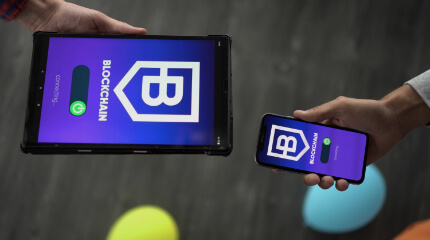
Is BlockChain Technology Worth The H ...
Unfolds The Revolutionary & Versatility Of Blockchain Technology ...

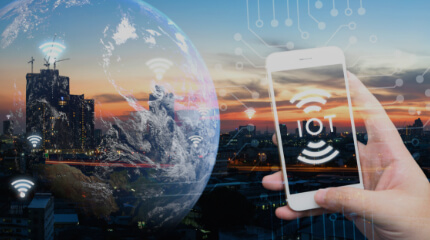
IoT Technology - A Future In Making ...
Everything You Need To Know About IoT Technology ...

Feel Free to Contact Us!
We would be happy to hear from you, please fill in the form below or mail us your requirements on info@hyperlinkinfosystem.com
Hyperlink InfoSystem Bring Transformation For Global Businesses
Starting from listening to your business problems to delivering accurate solutions; we make sure to follow industry-specific standards and combine them with our technical knowledge, development expertise, and extensive research.
4500+
Apps Developed
1200+
Developers
2200+
Websites Designed
140+
Games Developed
120+
AI & IoT Solutions
2700+
Happy Clients
120+
Salesforce Solutions

40+
Data Science












